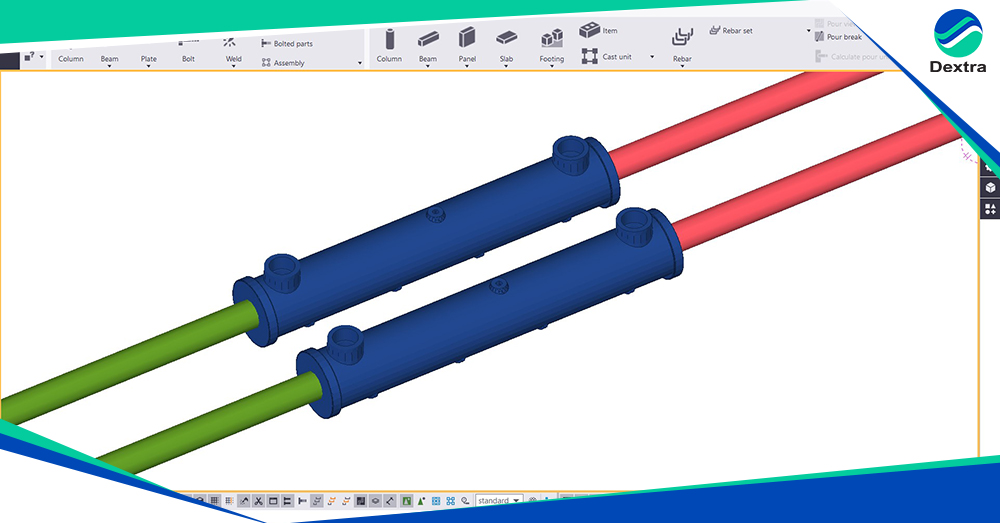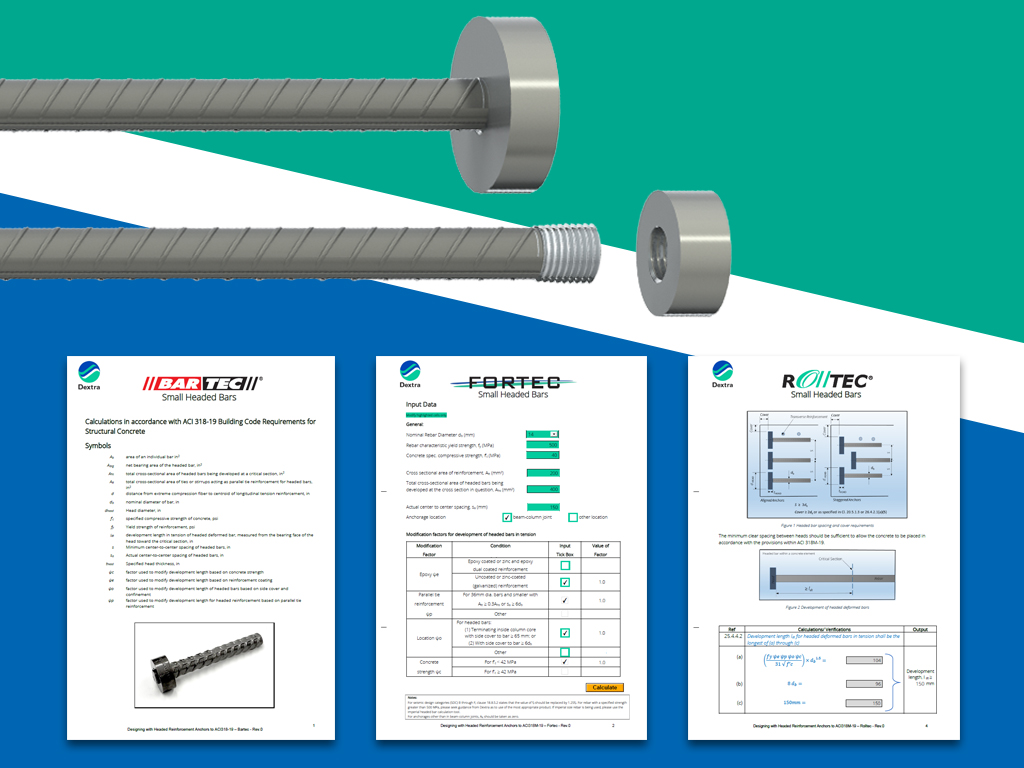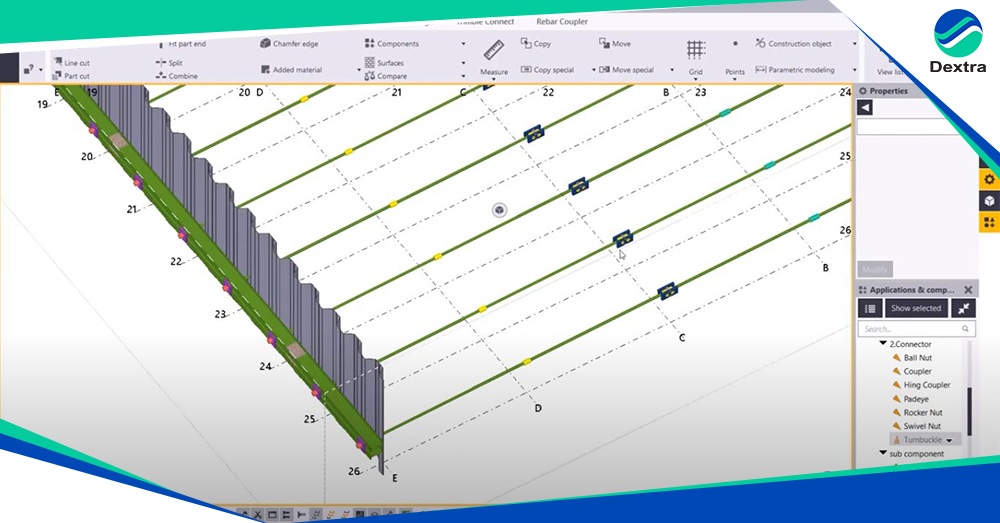
Посетите стенд RHE24 / DEXTRA на Австралазийской конференции по тоннелестроению (ATS 2020+1) с 10 по 13 мая 2021 г., стенд № 57, Мельбурнский выставочный и конференц-центр (MCEC), Австралия.
Декстра Групп | Надежные соединения

Посетите стенд RHE24 / DEXTRA на Австралазийской конференции по тоннелестроению (ATS 2020+1) с 10 по 13 мая 2021 г., стенд № 57, Мельбурнский выставочный и конференц-центр (MCEC), Австралия.

We are pleased to invite you to our live webinar on “Headed Bars Design According to ACI 318”, presented by Richard Goodman, Technical Manager, Dextra Europe, on Wednesday, 28th April, 2021 from 3 to 4 p.m. (GMT+7).
The webinar will introduce the basis of how to design with headed bars in accordance with ACI 318 principles, as well as giving practical advice and information about their use.
With over 25 years of experience in the design of steel products for construction, Richard will share his knowledge and insights on how your can apply the FRP rebar to your next construction projects.
We are pleased to announce that Dextra India offices in Mumbai and Chennai have been relocated, in order to provide an even better service to all our customers.



Dextra America has launched a US made “push fit” designed sonic tube system for Crosshole Sonic Logging (CSL) testing of concrete. Sonitec tubes facilitate the integrity testing of foundations using the CSL testing method and are compliant with ASTM D6760. Sonitec CSL tubes are designed specifically for CSL testing and provide a safer and quicker solution when secured in подкрепление клетки.
Sonitec comes in two different models, the Sonitec Plus and Sonitec Slim. The Sonitec Plus is 2” Schedule 40 steel pipes with an enlarged end in a bell mouth shape for instant connection: it makes for quick and easy push-fit installation. It is produced in compliance to AASHTO (American Association of State Highway and Transportation Officials) standard.
Sonitec Slim sports a lighter design, with a thinner wall thickness of .49” and a diameter of 2”, resulting in over 70% weight reduction. It also features the same “push fit” design for quick and easy installation.
Both models are tested and qualified in the U.S.A and exceed pressure of 725 psi for one minute.
Despite being a recent addition to Dextra America’s product portfolio, Sonitec CSL tubes have been trusted on jobs for over 20 years and are the preferred solution for укладка and general contractors worldwide. Sonitec saves time and labor in the field and offers a safe and quick solution for a perfect CSL testing environment.
Sonitec is now proudly made in the U.S.A. with U.S. steel, thus fully compliant with Buy America and Buy American Acts.

Glass Fiber Reinforced Polymer (GFRP) solutions are frequently used for several applications in civil engineering due to its many benefits compared to alternative, conventional materials:




In mining and tunneling this composite technology has successfully been used for decades, and GFRP is now also available for soil nails and tieback ground anchors.
A perfect showcase of latest GFRP solutions available is the Melbourne Metro Tunnel project, a major enhancement to Melbourne’s rail network: a multibillion-dollar project comprising the design and construction of twin nine-kilometer tunnels and five underground stations.
Dextra supported the project team with its technical expertise on GFRP at design stage and manufactured the GFRP solutions as per the project’s requirements:

ASTEC GFRP Combination Bolts were used as temporary measure to secure the center walls of the 19m wide caverns of the two major CBD stations during construction of two conventional 7m tunnels, built in parallel. Easy removal after completion enabled faster construction progress.

GFRP Astec soil nails secure the stations walls under construction. Some of the anchors are located outside the boundary of the project and can remain in the ground as material properties allow for easy cutting at later stage via commonly used excavation equipment.

GFRP ASTEC Soft-Eyes enabled disruption-free penetration of the Tunnel Boring Machines (TBM) through the thick concrete diaphragm walls of five stations. No demolition equipment needed, and no workers required to access the shaft to guarantee the maximum level of safety and efficiency.
To learn more about Dextra GFRP solutions in Australia please:

Мы рады сообщить о выпуске Headed Bar Calculation Tool as per ACI 318, available for:
Этот документ позволит проектировщикам легко рассчитать минимальные требования к краям и расстояниям, армирование ограничителей и, при необходимости, коэффициент сцепления арматуры для стержней с головкой Dextra.
Упростите свою работу и воспользуйтесь инструментами Dextra!
Dextra held a seminar on building construction technology with Bouygues-Thai on Friday, September 18, 2020 at Dextra Manufacturing office and factory in Bangkok, Thailand.
The one-day seminar featured innovative precast element connection technology, tension and compression bar systems, crosshole sonic logging testing method, a technical detailing training and a factory visit.

These are extraordinary times, creating unique obstacles and unexpected opportunities for ports professionals around the world.
Join us at this upcoming webinar event to discuss about the situation in Southeast Asia:
CURRENT CHALLENGES AND FUTURE OPPORTUNITIES FOR PORTS AND SHIPPING IN ASEAN
Thursday, September 24, 2020
10.00 to 11.30AM (CEST)
The webinar features prestigious panelists in the port and shipping industry of Indonesia, Malaysia and Philippines, along with Dextra experts in port expansion solutions.

